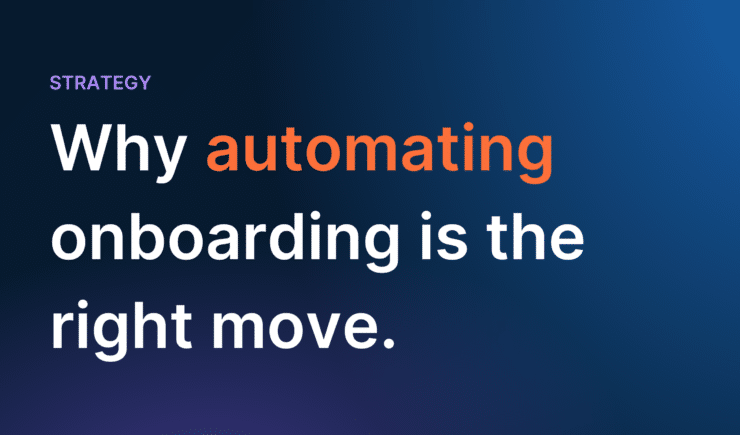The Training function can play a larger role in business strategy when training data is properly leveraged. When business leaders understand how to use training data’s full potential, the Training function can be a key player in achieving strategic goals.
Data on training operations is a potential wealth of information about processes and human resources within the organization. Using that data, Training can be geared to target specific KPIs and support a company-wide process of improvement. By providing that support and those data-driven insights, the Training team can position itself to support business’s strategic objectives.
Let’s take a closer look at how Training’s data and operations can support broader business goals and strategy.
A Rich Data Source for HR and Operations
Almost every employee in an organization will have been given training in some way, at some point. The Training team is therefore an almost universal touchpoint. That makes it well-positioned to provide data and visibility into what and how the workforce is learning. That knowledge can lead to key insights into company processes.
Suppose a manufacturing company establishes increasing throughput and productivity by 10% as an OKR. Training may not be directly responsible for the processes in question, but a dive into the training data could still produce some insights. Considering how the training function touches on those processes might reveal areas for improvement.
Employees trained by specific instructors may have substantially higher or lower performance in certain areas than the average. Or, maybe a review of past training reveals that there are bottlenecks in the number of employees certified for a certain process. The training process that prepared employees for their roles, can offer insights into how to improve their capabilities further.
That kind of meta-analysis of training data is essential. The goal is not to study the training process itself by collecting activity metrics like attendance or course completion rates. Those metrics are certainly useful and necessary. However, deeper value exists in examining how the training process is equipping employees to perform after they have left the classroom.
Traditional reporting solutions won’t be sufficient here. They tend to focus too much on metrics about training delivery, with no opportunity to link those metrics to their downstream impact.
A flexible, comprehensive, and easy-to-use reporting architecture can unlock the full potential of training data for enterprise. Administrate’s no-code reporting engine does just that, providing complete access to all of your training data from within a single system. Armed with this data, you can demonstrate the impact of training operations on business strategy and the bottom line.
Reducing the Cost of Talent
Even prior to the COVID-19 pandemic, the labor market in the US and much of the world was strained by a shortage of qualified professionals. Many fields such as logistics, manufacturing, and construction have been hampered by shortages of workers for years now. A lack of new college graduates in these fields means that these shortages are likely to continue for some time.
The result for businesses is a bidding war for talent, and a high rate of job-hopping as employees pursue better offers from other companies. The cost of talent has never been higher. The centrality of talent management to executing overall business strategy has never been more crucial.
Training can support talent management by providing the capacity to develop talent internally. With the right investment in content and instructors, effective management can coordinate a very large volume of training. That can be used to put employees into L&D paths that gradually upskill them into well-rounded professionals. With this approach, the Training team can target and cultivate the skill-sets needed to take on specific roles within the organization.
Promoting internal mobility can make it less necessary to rely on the labor market for a highly-qualified candidate. Making internal mobility and continuous learning a part of company culture can also offer employees an incentive to stay with the organization.
Employees who feel that their professional careers are being invested in are less likely to switch employers. Providing employees a clear career prospect within the company is also key to boosting retention. That’s not just a hypothetical statistic – companies with high internal mobility and internal hiring rates retain employees almost twice as long on average.
Developing and utilizing internal talent pools, however, requires visibility on employees’ existing skills, and a highly modular, adaptable training function. Upskilling has to be tailored to each employee, to maximize their existing skills while building the foundations for new ones. As such, effective tools for managing large amounts of training are a must.
Administrate attacks this problem from both sides. With the Learning Paths feature, training programs can be easily customized and rearranged. Individual learners can be targeted for a custom-tailored experience learner will progress though the system. If a specific learner is already qualified in a given area, for example, the unnecessary training can easily be removed from their program. The changes will propagate automatically throughout the Administrate system.
At the same time, managing and scheduling complex training logistics is made easy with Administrate’s Scheduler feature. Scheduler is a prescriptive analytics tool that can automatically generate optimized schedules. This can completely bypass the often weeks-long manual process of creating a workable course schedule. And because Scheduler can easily adjust to changing parameters, it’s possible to quickly generate new schedules in response to a disruption.
Administrate provides infrastructure software support for training operations. By combining management tools like Learning Paths and Scheduler with powerful data reporting and analysis capabilities, it’s possible to maximize the efficiency, and impact, of Training. With that support behind the Training team, it’s possible to fully mobilize training as the driving force behind business strategy.
In 2022, Administrate has seen hundreds of Training teams react to a rapidly changing business environment with a variety of strategies. To close out 2022, we’ve brought together market research and our own internal usage data to develop the 2022 Administrate Annual Report. It contains actionable insights on how Training teams are supporting their own businesses’ strategic aims.





